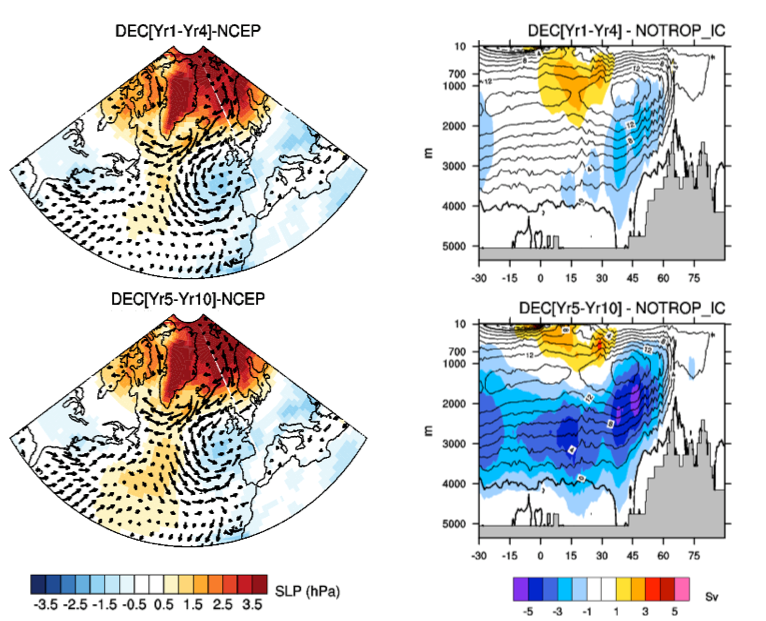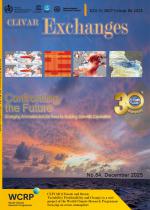Physical analysis of the model drift in decadal forecasting

Climate models are used to simulate aspects of the real climate, subject to model numerics, physics and approximations. As such, drifts/biases are often present when models are initialized from observed conditions to produce climate predictions. The drift can be defined as the sequence of physical processes by which the model adjusts back to its own biased mean climate state. Model drifts must be removed from predictions before skill scores are calculated for forecast verification. The model drift itself is rarely analysed.
In this work however, we do not focus on the predictive performance of our forecast system. Instead, we show how the analysis of the model drift can provide useful information on the physical processes involved in the development of some model systematic biases. Importantly, this helps us to understand model behavior and what mechanisms need be improved in climate models.
We analyse data from CMIP5 decadal historical predictions (hindcasts) performed by the CNRM-CM5 climate model for the period 1960-2010. We focus our drift analyses on two specific regions: the Tropical Pacific and the North Atlantic basin.
The main results are:
a) In the Pacific, we show that the first year of the forecast is characterized by a quasi-systematic excitation of El Niño-Southern Oscillation (ENSO) warm events. This is due to an ocean-to-atmosphere transfer of heat by which the coupled model adjusts back to its own biased mean state. Weak La Niña events occur during the second year due to the so-called discharge-recharge mechanism. This oscillatory behavior is progressively damped. The spurious excitation of ENSO events leads to remote affects of the atmospheric circulation over the North Atlantic through teleconnections, leading to an anomalous NAO pattern in the predictions.
b) In the North Atlantic, we highlight the important fact that the mean atmospheric model biases can be first attributed to the biases of the stand-alone atmospheric component that strongly projects onto a permanent NAO pattern (Figure, left panel). Under NAO-like conditions, weaker winds over the northern North Atlantic lead to surface warming in the Subpolar Gyre region and a reduction in the formation of deep-water masses. This leads to a slackening of the thermohaline circulation (AMOC) in agreement with previous modeling studies (Figure, right panel).

Figure: (Left Panel) Differences in SLP (shading) and surface winds (vectors) between decadal forecasts and NCEP reanalysis for leadtimes averaged over Year 1-Year 4 (top) and Year 5-Year 10 (bottom). Color shading interval is every 0.5 hPa. Arrow units are 5 in m.s-1. (Right Panel) AMOC differences between decadal forecasts and initial conditions for leadtimes averaged over Year 1-Year 4 (top) and Year 5-Year 10 (bottom). The black contour represents the AMOC long-term annual mean for initial conditions, contour interval is every 2 Sv.
Written by Emilia Sanchez-Gomez
Drift dynamics in a coupled model initialized for decadal forecasts (Climate Dynamics)
Emilia Sanchez-Gomez1, Christophe Cassou1, Yohan Ruprich-Robert 2, Elodie Fernandez3 and Laurent Terray1
1 CERFACS/CNRS, SUC URA1875, Toulouse, France
2 NOAA/GFDL, Princenton, USA
3 Mercator-Ocean, Toulouse, France
(Pulished Online 19 Jun 2015)










